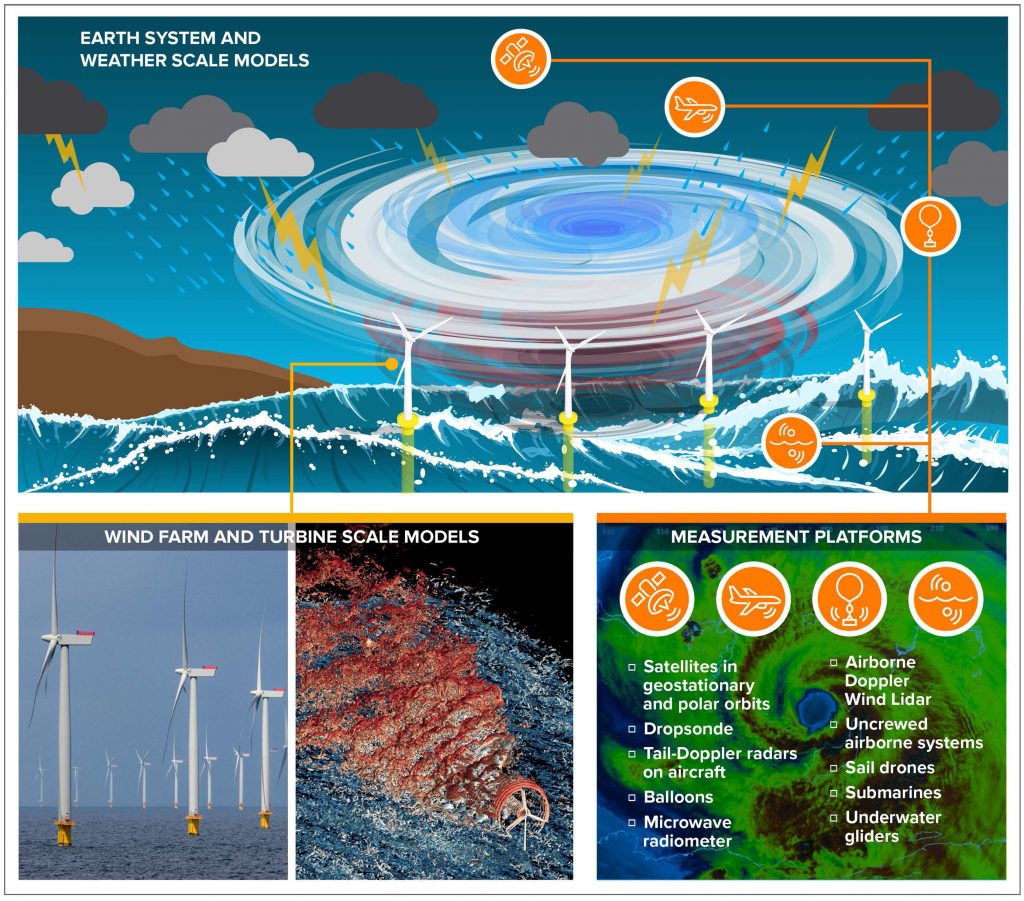A wind turbine experiences a single point in a tropical storm, models need to scale down.
From the Journal: Journal of Renewable and Sustainable Energy

WASHINGTON, Oct. 15, 2024 – The U.S. is ramping up plans for a major increase in offshore wind production, with 30 gigawatts of new installations expected by 2030 and a total of 110 gigawatts by 2050. But to be successful, the country needs to design turbines that can withstand the challenges of tropical storms.
“Extreme weather impacts on offshore wind turbines are not fully understood by the industry,” author Jiali Wang said. “Manufacturers design wind turbines based on international design standards, but better models and data are needed to study the impacts of extreme weather to inform and revise design standards.”
In a comprehensive review published this week in the Journal of Renewable and Sustainable Energy, by AIP Publishing, Wang and colleagues at Argonne National Laboratory, the National Science Foundation National Center of Atmospheric Research, the National Renewable Energy Laboratory, Michigan Technological University, and Pacific Northwest National Laboratory critically examined the landscape of tropical storm observation technology. They also reviewed advanced physics-based modeling and data-driven models that use AI and machine learning.
“The intensity of extreme weather events is not well predicted by traditional methods,” Wang said. “After reviewing the state-of-the-science technologies and methods, we need to do the work to bridge between the scales of weather data, whole wind farms, and individual wind turbines.”
For example, offshore wind turbine standards created by the International Electrotechnical Commission do not account for the complexity of extreme weather impacts on turbines, and they could benefit from robust data from a variety of new technologies and data-sharing collaborations.
The authors note advanced modeling techniques are rapidly developing, such as deep neural networks that downscale existing regional data to point-scale data using super-resolution techniques. Another key advancement is using machine learning methods for dynamic warm potential predictions, which can better predict the intensity of a storm.
“We need models that address problems at very small scales, such as understanding what happens from one turbine to another,” Wang said. “Satellites and other remote sensing technologies that can scan a region autonomously are helpful during extreme weather conditions, but their accuracy may be affected by heavy rain, and they cannot provide wind information at multiple altitudes like rotor heights.”
Implementing data that reflect complex interactions of multiple storm effects at different scales is important for updating models and turbine design standards, the authors note, along with understanding the impacts climate change will have on storm predictions.
“Both high winds and waves are damaging, because waves can create energy that can drive ocean currents,” Wang said. “These three components of wind, waves, and ocean currents can come from and go in different directions. This is known as misalignment and makes the turbine more vulnerable.”
###
Article Title
Modeling and observations of North Atlantic cyclones: Implications for U.S. offshore wind energy
Authors
Jiali Wang, Eric Hendricks, Christopher M. Rozoff, Matt Churchfield, Longhuan Zhu, Sha Feng, William J. Pringle, Mrinal Biswas, Sue Ellen Haupt, Georgios Deskos, Chunyong Jung, Pengfei Xue, Larry K. Berg, George Bryan, Branko Kosovic, and Rao Kotamarthi
Author Affiliations
Argonne National Laboratory, U.S. National Science Foundation National Center of Atmospheric Research, National Renewable Energy Laboratory, Michigan Technological University, University of New Hampshire, Pacific Northwest National Laboratory
